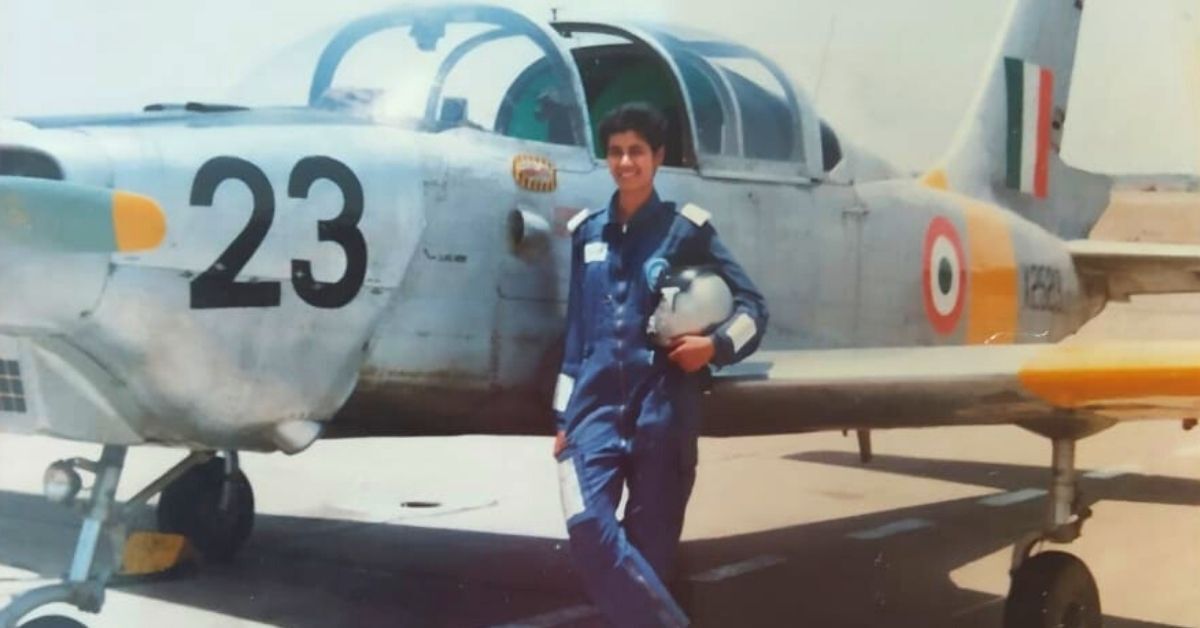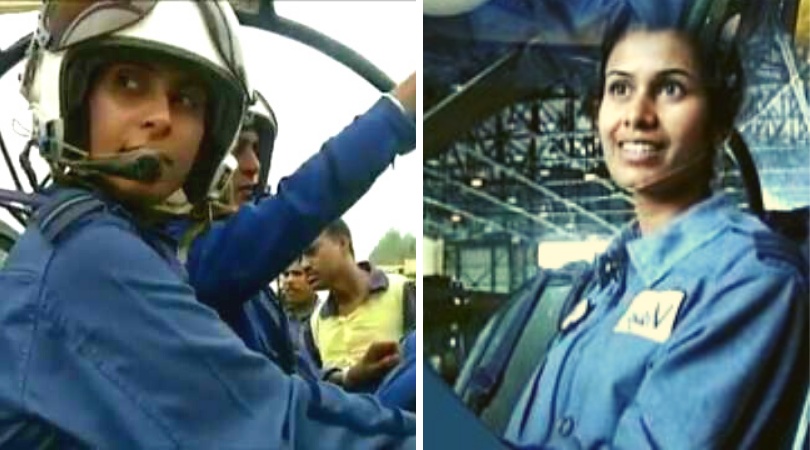Exclusive: ‘Was Never Treated Less,’ Says Gunjan Saxena’s IAF Colleague
Gunjan Saxena and Sreevidya Rajan were India’s first women combat aviators who served the heart of the war zone in 1999.

Continuing the Hindi film industry’s fascination with biopics that depict a person’s failure-to-success journey, Gunjan Saxena, a film that was recently released on Netflix, makes a dramatic attempt at unearthing deeply ingrained prejudices that plague male-dominated professions.
For those who don’t know, the film narrates the story of Flight Lieutenant Gunjan Saxena, a former Indian Air Force (IAF) officer and a Kargil War veteran who was the first Indian woman to fly in a combat zone. In one of the penultimate moments in the film, Gunjan, who is shown to face and overcome sexism and misogyny at the hands of male officers at the Udhampur Air Base where she is a Flight Commander, heroically rescues the very same senior who cancelled her flying schedules over frivolous reasons.
However, the content of the film has not gone down well with the IAF, and a few days ago, it sent a note to Dharma Productions, the production company behind the film, the Central Board of Film Certification (CBFC) and Netflix raising concerns over glorifying Gunjan’s struggles at the expense of showing men in blue uniforms in a poor light.
Not just that, Wing Commander (Retd.) Namrita Chandi also wrote an open letter to the makers revealing her side of the story, “I have myself served as a helicopter pilot and I have never faced the kind of abuse and maltreatment as was portrayed in the movie. In fact, men in uniform are true gentlemen and professionals.”
The burning question is how far can a filmmaker go under the garb of ‘creative freedom’ to highlight struggles of an individual or for that matter disregard (or disrespect) other stakeholders?
The Better India spoke to Lieutenant Sreevidya Rajan, Gunjan’s contemporary at the Udhampur Air base. As per Livemint, the duo was together in the second batch of helicopter pilots, or the fourth batch of women officers inducted into the IAF from 1992.

She clarifies that Gunjan was not the only female IAF pilot to be posted in the helicopter unit in 1996, and the movie has certain instances where it deviated from reality. While she agrees that ‘preconceived notions’ and ‘prejudices’ were hurled at them from a few colleagues, there were officers extending support.
“It was only after seeing the movie that I realised there were certain errors. Like every other field, there were a few colleagues, who were reluctant to accept women working alongside them. That said, there was a lot of officers who supported us. It was a mixed bag, something that the movie has failed to acknowledge. They have put out negativity instead of creating a narrative that would inspire the next generation to dream big and achieve it. It’s not like everyone is going to attack or torture you. I was never treated that way by any of my male counterparts.”
In a recently shared a Facebook post she also underlines the gender disparity that came with being in a male bastion.
“We were under strict scrutiny and certain mistakes of ours were met with corrective actions which may have been overlooked had it been done by our male counterparts. We had to work harder to prove ourselves to be at par with them. Some were not happy to share the professional space with us but the majority accepted and treated us as fellow officers working towards a common goal,” she wrote.
In sharp contrast to the movie, their training was never cancelled for “petty” reasons as the squadron commander was a thorough professional. Neither were the duo subjected to any humiliations based on their physical strengths as shown in the movie.
However, in the same breath she reveals there were no toilet facilities and changing rooms for the lady officers, “After initial difficulties, we shared the limited resources with our fellow officers and they always accommodated and helped us whenever it was needed.”

Another factual error is stating or implying that Gunjan was the only lady pilot to fly in Kargil operations. This was pointed out by Wing Commander (Retd) Chandi as well. As per the post, Sreevidya was the first woman pilot to be sent in their unit’s first detachment at Srinagar.
“I flew missions in the conflict area even before Gunjan’s arrival at Srinagar. After a few days of operation, Gunjan Saxena came to Srinagar with the next set of crew. We actively participated in all operations given to us which included casualty evacuation, supply drop, communication sorties, SAR, etc.”
Sreevidya also debunks the climax and says it never happened.
“She (Gunjan) is a brilliant officer and a thorough professional. She had many achievements during her career which should have been portrayed to inspire the younger generation instead of showing her as a weak and oppressed victim in certain scenes. The movie is sending out a wrong message about the lady officers of IAF thereby demeaning the prestigious organisation of our country,” she adds.
She reiterates that women pilots were treated with “utmost” respect and that all officers were treated equally irrespective of their gender.
“In Kargil operations, male pilots had flown extensively and faced more hardships than us. But they never got or sought any publicity. We probably were given this fame because of our gender which I do not support. In defence services, there is no disparity between male or female. We are all officers in uniform.”
After receiving flak over misrepresentation, Gunjan, too came out and addressed the question. She confirmed that equal opportunities were given and the increasing number of women officers over the last two decades is proof.
Just a few weeks ago, Meghna Gulzar’s directorial venture, Raazi was also accused of intentionally altering the climax by ex-Naval officer Harinder Sikka, whose book Calling Sehmat is the basis for the film.
Biopics have always been dangerous territory. However, any alterations or errors in the narrative can have serious repercussions considering cinema plays such an influential role in India. Thus, a shared responsibility between the filmmakers and the person on whom the biopic is based on is something that the film industry needs to seriously explore in future.
Featured image Source
Edited By Gayatri Mishra
If you found our stories insightful, informative, or even just enjoyable, we invite you to consider making a voluntary payment to support the work we do at The Better India. Your contribution helps us continue producing quality content that educates, inspires, and drives positive change.
Choose one of the payment options below for your contribution-
By paying for the stories you value, you directly contribute to sustaining our efforts focused on making a difference in the world. Together, let’s ensure that impactful stories continue to be told and shared, enriching lives and communities alike.
Thank you for your support. Here are some frequently asked questions you might find helpful to know why you are contributing?


This story made me
-
97
-
121
-
89
-
167











